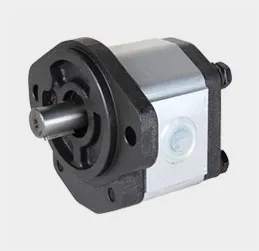Innovative Techniques in Low Volume Sheet Metal Stamping for Efficient Production
Low Volume Sheet Metal Stamping A Comprehensive Overview
In the realm of manufacturing, sheet metal stamping has emerged as a crucial process for producing a wide range of metal components used in various industries. While much attention is often focused on high-volume production techniques, low volume sheet metal stamping has gained significant traction as companies seek to meet the demands of customization and quick turnaround without compromising quality.
What is Low Volume Sheet Metal Stamping?
Low volume sheet metal stamping refers to the production of metal parts in limited quantities, typically ranging from a few dozen to several thousand units. This technique utilizes metal sheets that are shaped and cut through the use of dies and presses. Unlike traditional high-volume stamping processes, low volume stamping is designed to cater to specific needs, allowing for higher flexibility in design and production capabilities.
Advantages of Low Volume Stamping
1. Cost-Effectiveness One of the most significant advantages of low volume stamping is its cost efficiency. For businesses that do not require mass production, creating complex dies and investing in large-scale manufacturing setups can be financially burdensome. Low volume stamping allows manufacturers to minimize upfront costs and still achieve high-quality parts.
2. Rapid Prototyping In industries where speed to market is essential, low volume stamping facilitates rapid prototyping. This is particularly useful in sectors like automotive, aerospace, and electronics, where new designs are frequently tested. With low volume stamping, companies can quickly produce prototypes, test their performance, and refine designs without the long lead times associated with traditional manufacturing methods.
3. Flexibility and Customization Low volume stamping supports a high degree of customization. Designers can easily modify existing dies or create new ones to accommodate specific client needs. This adaptability is crucial for industries that require tailored solutions to function effectively, such as medical devices, specialty machinery, and unique consumer products.
4. Quality Control With low volume production runs, manufacturers can prioritize quality control. Smaller batch sizes enable closer monitoring of the stamping process, resulting in fewer defects and a higher overall quality of the end product. This meticulous attention to detail is particularly vital in industries with stringent regulatory requirements.
low volume sheet metal stamping

Applications of Low Volume Stamping
Low volume sheet metal stamping finds applications across various sectors. In the automotive industry, for instance, it is often used to create prototype parts or custom components for specialized vehicles. The aerospace sector benefits as well, with the production of intricate and lightweight parts that must meet rigorous safety standards.
Furthermore, low volume stamping plays a significant role in the electronics industry, where manufacturers require precise, small-scale components for devices such as smartphones and computers. Medical device manufacturers also rely on low volume stamping to create specialized tools and parts that require high levels of precision and reliability.
The Future of Low Volume Stamping
As manufacturing technologies continue to evolve, the landscape of low volume sheet metal stamping is likely to change. Innovations such as advanced computer-aided design (CAD) software, automation, and additive manufacturing are expected to enhance the efficiency and capabilities of low volume stamping. These advancements not only improve production speeds but also allow for more complex geometries and designs that were previously unattainable.
Moreover, as sustainability becomes a vital consideration for manufacturers, low volume stamping can minimize waste and energy consumption. The ability to produce only what is needed, when it is needed, aligns well with the principles of lean manufacturing and sustainable practices.
Conclusion
Low volume sheet metal stamping serves as a vital manufacturing process in today's competitive landscape. Its blend of cost-effectiveness, flexibility, rapid prototyping capabilities, and stringent quality control positions it as an attractive option for businesses looking to innovate and adapt to evolving market demands. As technology continues to advance, the potential for growth and efficiency in low volume stamping will only expand, making it a key player in the future of manufacturing.
-
Pros & Cons of Sand Casting: Products & ApplicationsNewsAug.19,2025
-
Advanced Crawler Drilling Rig for Confined Spaces-Baoding Hairun Machinery And Equipment Trading Co., Ltd.NewsAug.18,2025
-
Crawler Drilling Rig- Baoding Hairun Machinery And Equipment Trading Co., Ltd.|Pneumatic Power,Frame-Supported DesignNewsAug.18,2025
-
Precision OEM Valve Body Castings for Superior PerformanceNewsAug.18,2025
-
Crawler Mounted Drill Rig - Baoding Hairun Machinery | Underground Drilling SolutionsNewsAug.18,2025
-
Crawler Mounted Drill Rig - Baoding Hairun | Pneumatic Safety, Mining EfficiencyNewsAug.17,2025















